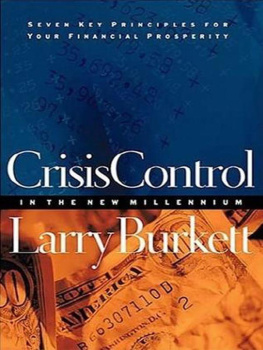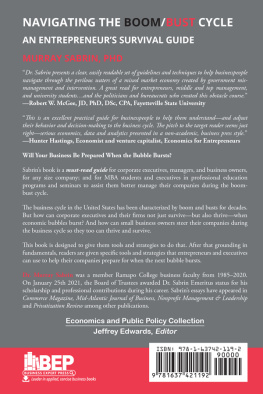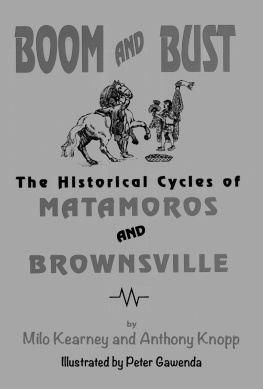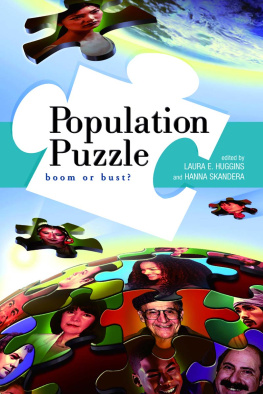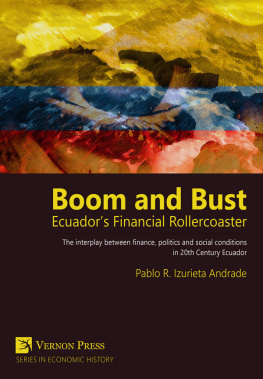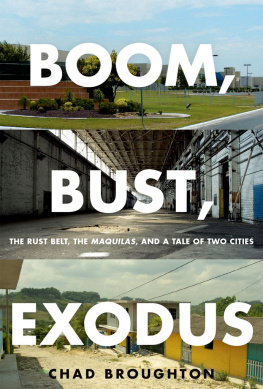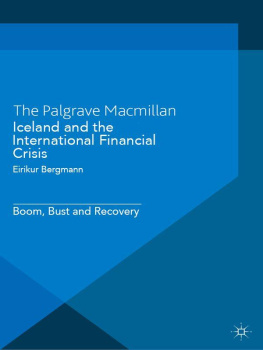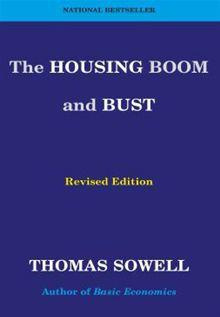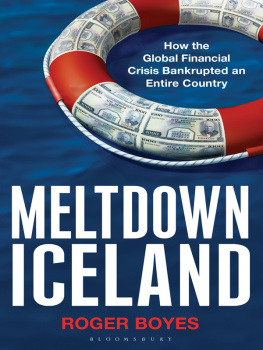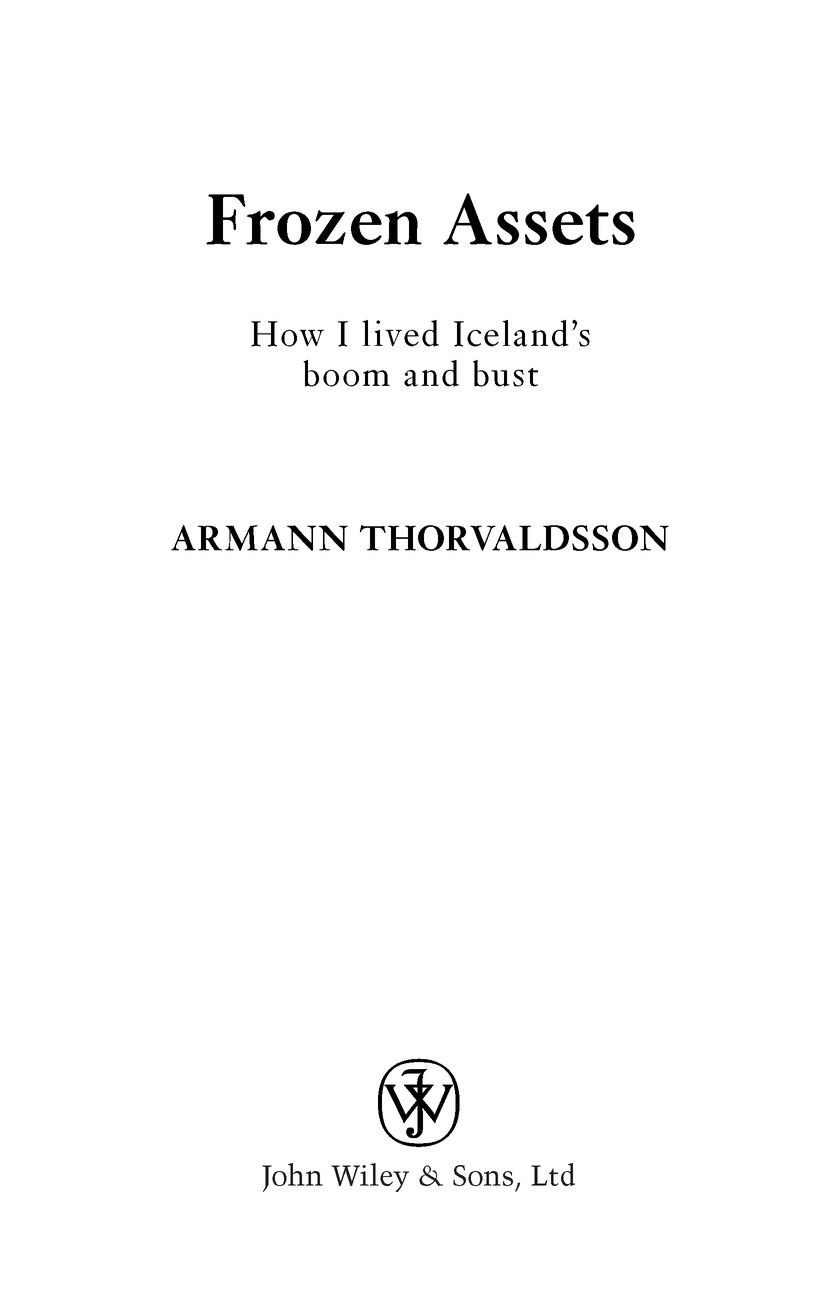Table of Contents
Preface
Wednesday 8 October 2008, 10 a.m., Kaupthing Singer & Friedlander, London
In the cafeteria, I was talking to one of the girls from the Treasury desk. Half-heartedly, I was trying to explain our survival chances. Then I noticed that she was looking past me, started to shake uncontrollably and I saw tears streaming down her face. When I turned around, I saw why. Blazoned across the Bloomberg TV screen was the screaming headline Kaupthing collapses. Shortly after, in a live broadcast from parliament, Alistair Darling, the Chancellor of the Exchequer, announced that he had sold the Kaupthing Singer & Friedlander deposits to ING Direct. He further said he had placed the bank into administration.
As the CEO of Kaupthing Singer & Friedlander (KSF), the news came as a slap in the face. Like everyone else, I knew there were difficulties, but had never been part of discussions with ING, or any other bank, about selling our deposits. The Treasury had invoked a law drafted in the aftermath of the collapse of Northern Rock in 2007, allowing them to remove the deposit base of any bank and replace it with a claim from the Treasury. I knew, though, that no law should have allowed Darling to place KSF in administration without my knowledge. In fact, we were still in discussions with the UK Financial Services Authority (FSA).
Glitnir, another leading Icelandic bank, had been clumsily nationalised a week earlier, precipitating a week of sleepless nights. Gradually but steadily, this had diminished confidence in the Icelandic banking sector our funding base began to melt away. Over that weekend, we had worked hard on a detailed plan to shrink the business and generate the liquidity we so badly needed.
That Monday, we needed a decent market; a strong headwind. What we got was one of the worst days in the history of the London Stock Exchange. The FTSE index dropped by eight percent. We needed a signal of strong support from the Icelandic government. What we got was an address from the Icelandic Prime Minister announcing that an emergency law had been enacted, subordinating bondholders to depositors. The Prime Minister ended his address with God Bless Iceland. So much for strength.
With both Glitnir and Landsbanki (the other major Icelandic banks) under the administration of the Icelandic FSA, the UK government used anti-terror laws to freeze the assets of Landsbanki in the UK. A fight started to brew over Landsbankis Icesave deposit scheme, resulting in UK Icesave depositors being unable to access their funds. Icesave was the closest comparable product to our internet deposit accounts
Kaupthing Edge. This was bad news. The media coverage talked constantly of the Icelandic banks tarring us all with the same brush.
Almost all counterparties cut their lines to KSF. Then, that most dreaded event a run on the bank. In a week, close to 1 billion evaporated. Under pressure, we managed to sell some assets and draw on lines with the parent bank. Further money from Iceland was being discussed when the ING deal with the Treasury was announced that Wednesday morning.
As the news flashed across the Bloomberg screen, I called my contact at the FSA in Canary Wharf. She seemed surprised. A few minutes later, she called back to tell me this wasnt right. If only the parent company back in Iceland could come up with 300 million more liquidity, we would still be a going concern. But the writing was on the wall. Darlings announcement made sure that Iceland wouldnt send any money, and that there would be an even greater run on the deposits. It was all over.
I sat alone at my desk, staring at the computer screen. I felt shattered. I had staggered on for a week, sleeping just a few hours each night, now I was running on empty. It was difficult to sort out the feelings. Years of work building up a business had come to an end. Hundreds of people would lose their jobs. People who had trusted us with their money would lose a part of it how much I couldnt tell at the time.
But then the failure of KSF in the UK was almost overshadowed by the fact that Kaupthing as a whole had fallen. I had spent even more time, almost 15 years, building it with my colleagues and friends. Still, the failure of one bank seemed minor, compared to the fact that my country was in ruins.
I started to think about how all this had all happened. How Iceland a tiny nation in the Atlantic rose to the heights of international finance; how I was involved; and how and where it all went wrong. We had built up a bank from a floor of an office block in Reykjavik to beautiful offices in the worlds financial capitals; from being worth less than $4 million to a market capitalisation of over $10 billion. We had travelled the world, changed the face of the high street and rubbed shoulders with celebrities.
I left the Kaupthing Singer & Friedlander building in Mayfair, and stepped into my chauffeur-driven car for the last time. I couldnt help but think back to when it had all started, and how my entrance at Kaupthing contrasted with my exit.
Chapter One
A Catalyst is Born
I had just turned 26 years old when I first arrived at the Kaupthing building in my Russian Lada, in the bitter snows of Boxing Day 1994. It wasnt a graceful entrance. My passenger door was held together by a piece of string, the temperature controls did the opposite of what you asked them and you had to switch the headlights on to get the windscreen wipers to work. I had bought it with money scraped together by organising a book market with a friend after six months of unemployment. I still remember the smell of the aftershave I was wearing as I walked through the doors of Kaupthing. It was probably because it was one of the first times I had actually worn aftershave. It was my first real job and I was seriously stressed. Although I had specialised in finance during my MBA, I had no practical experience. What I had learned in the United States applied to the biggest financial market in the world. How the tiny Icelandic financial market worked was a mystery to me.

I wasnt born to be a banker. The neighbourhood I grew up in, Breidholt, was Reykjaviks equivalent to Brixton in London. The son of two teachers, my ambition from an early age had been to follow in their footsteps. Initially I wanted to teach physical education because I loved sport. But though I could easily swing a racket, throw a handball or kick a football, it quickly became apparent that I hadnt a clue how to explain these skills to someone else. At the age of 21 I decided that academic subjects would be better, and I began studying history at the University of Iceland, intending to be a history teacher. I did well, although I never felt completely at ease there. I suspect the professors mainly remember me because I finished my studies in two years, while the standard was three years. Some of them didnt like the fact that I did it so quickly and one of them even admitted he had lowered my grade because of it. Evidently he didnt believe I showed the subject enough respect by rushing through it.
At the time, if someone had told me that my future career would be in business and finance, I would have laughed in their face.
Ever since I was a child I had been known for either losing or giving away any money that came into my possession. The only business initiative I had shown in my early years was when, at the age of nine, I had set up a cinema in my parents garage and shown 8mm films to the neighbourhood kids. When my older brother saw the level of interest, he immediately took over the operation on the basis that he was the familys first born and could easily beat me up. Considerably more business savvy, he charged admission (which I hadnt thought of), bought popcorn and liquorice wholesale and sold it with a 100 percent margin to the appreciative and mostly illiterate audience. Under his management the garage cinema became an instant commercial success, not surprising given that he even charged me admission, although most of the films belonged to me.


